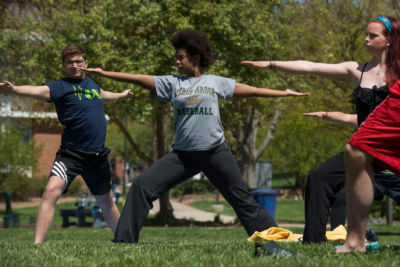By: Garrett Fojtik, Graduate Teaching Assistant, Academic Advisor, School of Integrative Studies
“Creativity is a natural extension of our enthusiasm.” – Earl Nightingale
Have you done something creative today? If not, you should consider pursuing a creative project you enjoy, such as drawing, singing, or writing. One fun way to express your creativity is by writing poetry.
Research shows us that time spent engaging in creative practice is directly linked to positive emotional and psychological outcomes. In fact, one study suggests that individuals who spent time being more creative than usual one day felt higher levels of energy, enthusiasm and excitement the next day than when they did not practice creativity in some way. Creative states have also been linked to more flexible responses to stress, allowing individuals to see additional approaches to stressors that may otherwise have remained hidden. Additionally, there is evidence that suggests that engaging in creative practice often coincides with an experience of “flow,” a state highlighted as cultivating feelings of pride, enjoyment and accomplishment. More on flow here.
You might be thinking, “Okay, but we can’t all be creative geniuses.” That’s probably true, but the good news is that the benefits highlighted above were not contingent on participants’ identifying themselves as having particularly creative personalities or as having notable artistic skills.1 It turns out that daily creative activities of a wide variety were enough to elicit these positive results.
Promoting Well-Being through Poetry-Writing
We don’t all have a surplus of spare time to spend engaging in creative hobbies each day, but there may be ways for us to integrate some form of creativity, however small, into our lives. The creative practice of writing poetry, which is itself linked to flourishing well-being outcomes, is one such way to do so . Below is a short “erasure” poetry practice to try. You don’t have to be a poet or have prior poetry experience to enjoy this practice. Consider this as an opportunity to slow down for a moment and to tap into some of the creativity that we all have within us.
Poetry Practice
Grab a black marker and an old book, or maybe a page from a printed article you don’t mind marking through. Start by opening to a random page. Now onto the fun part! After looking over the words on the page, strike through the content with intention, leaving visible specific words and phrases that will make up your finished “erasure” poem. Take your time here, creatively thinking of the best way to bring your poem to life. Maybe you create a new narrative with the words you leave unmarked. Maybe you bring to the surface a new emotion than wasn’t there before. When you feel like your poem is complete, you can leave the page as-is, or copy it over into a journal. Maybe you start a collection of these “erasures” as a regular way to do something creative for yourself. This can be a fun, low-stakes way to think creatively while taking a quiet pause during the day.
Of course, poetry isn’t the only creative practice you can try. Make up a dance, doodle in a notebook, paint a fun design on your nails, sing a new harmony to your favorite song, organize an online activism event, pick up some knitting needles and make your cat a sweater. The possibilities are endless! However big or small, doing something creative today may leave you feeling better tomorrow.
Additional Resources
United States Poets Laureate: A Guide to Online Resources
Psychology Today – What is Creativity?
Greater Good Science Center – Creativity and Well-Being Articles
Write one of these Thriving Together Series features! We’re looking for contributions on all topics related to well-being. Read other Thriving Together Series articles here and contact us at [email protected] for guidelines. Thank you for helping our Mason community thrive together online!






















